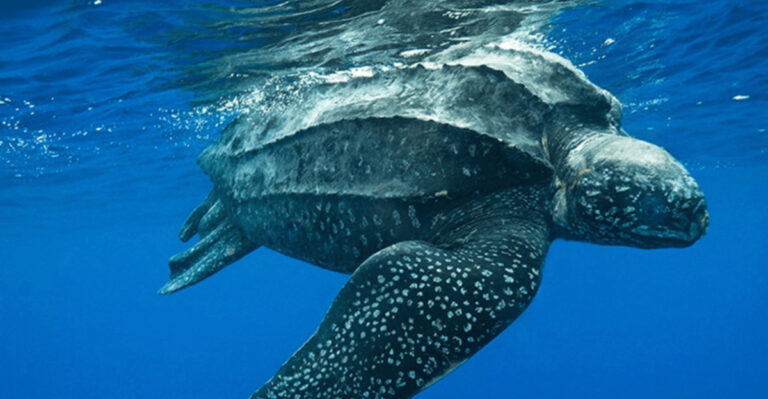Greenland Sharks: Fascinating Facts About The Ocean’s Unassuming Scavengers
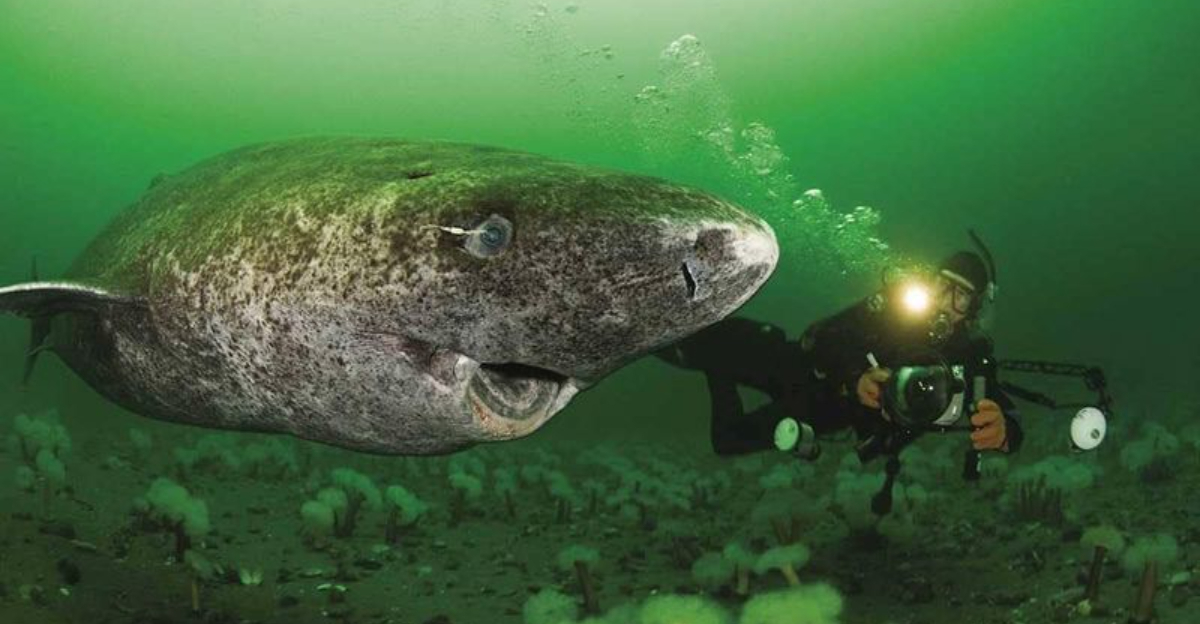
Hidden in the frigid depths of the Arctic and North Atlantic waters lurks one of the ocean’s most mysterious creatures – the Greenland shark.
These enormous predators silently glide through dark waters as living fossils, largely unknown to most people.
Despite their massive size and incredible longevity, these peculiar sharks have remained enigmatic, quietly roaming the deep while scientists gradually uncover their remarkable secrets.
1. Ancient Ocean Wanderers
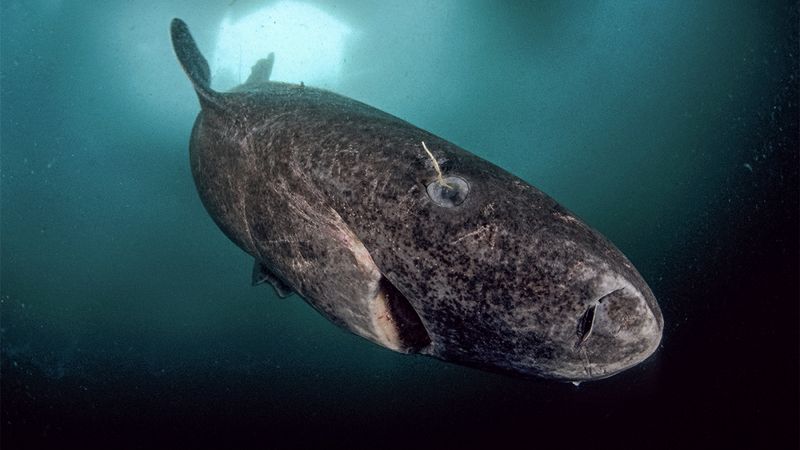
Greenland sharks are among the oldest living vertebrates on Earth, with lifespans estimated to reach up to 500 years! Scientists discovered their incredible age by radiocarbon dating their eye lenses, which don’t change throughout their lifetime.
One female shark studied was approximately 400 years old, meaning she was swimming around when Shakespeare was writing his plays and the Mayflower was sailing to America. These sharks grow extremely slowly, only about 1 centimeter per year.
Their extraordinary longevity makes them living time capsules, silently witnessing centuries of human history from the depths of the ocean.
2. Slow-Motion Predators
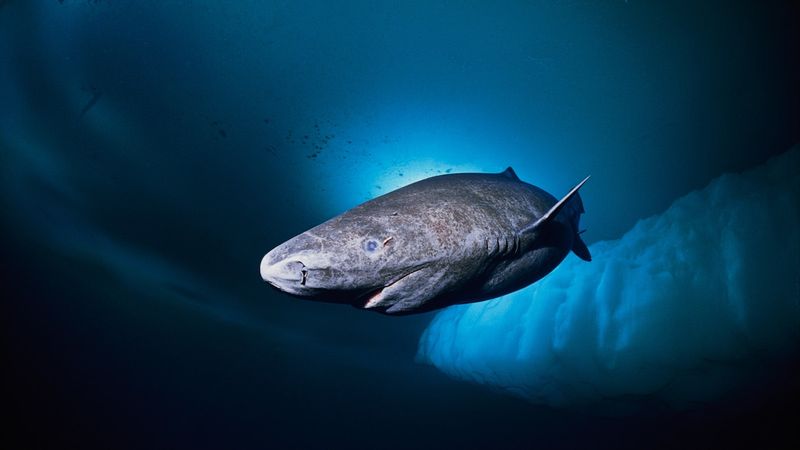
Despite being massive predators reaching lengths of 24 feet, Greenland sharks move through the water like they’re in no hurry whatsoever. Their top speed? A leisurely 1.7 miles per hour – you could easily outswim one!
This sluggish pace is perfectly adapted to their freezing habitat, where conserving energy is crucial. They’re ambush predators who rely on stealth rather than speed, sneaking up on sleeping seals or scavenging whatever food becomes available.
Their slow metabolism also explains their incredible longevity – everything about these sharks happens in slow motion, including aging.
3. Blind Hunters With Glowing Eyes
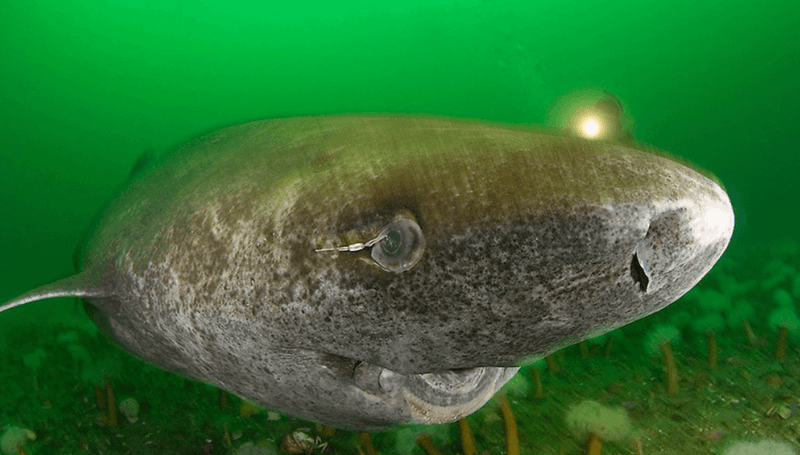
Almost all Greenland sharks are partially blind due to a bizarre parasite called Ommatokoita elongata. This small crustacean attaches to the shark’s corneas, dangling from their eyes like ghostly streamers. Surprisingly, the relationship might be somewhat beneficial – the parasites actually glow in the dark!
Scientists believe this bioluminescence might act as a lure, attracting curious prey close enough for the shark to detect through its other senses. Talk about making the best of a bad situation!
Despite their vision impairment, these sharks are successful hunters, relying on an exceptional sense of smell to locate food in the darkness.
4. Toxic Flesh That Makes You Drunk
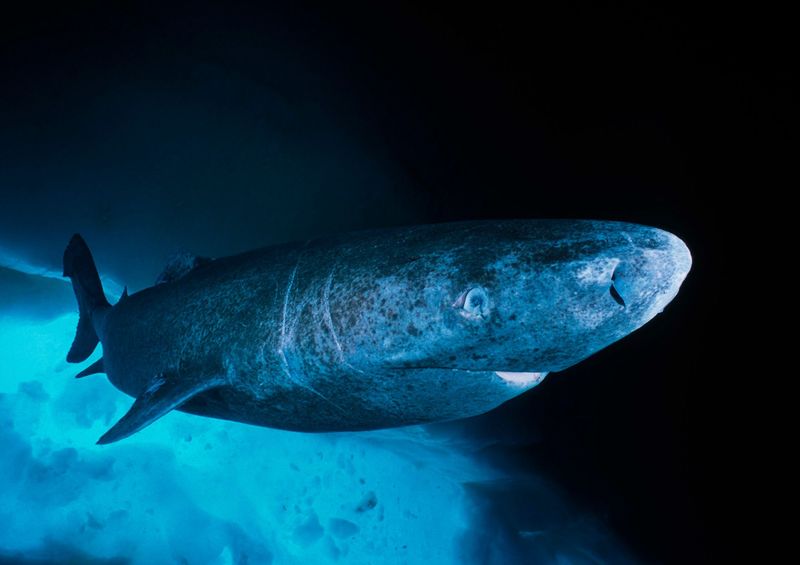
Fancy a shark meat snack? Not with Greenland sharks! Their flesh contains high levels of trimethylamine oxide (TMAO), which converts to trimethylamine when digested – a compound that produces effects similar to extreme drunkenness.
Brave (or foolish) people who’ve eaten improperly prepared Greenland shark have experienced staggering, hallucinations, and even temporary blindness. Despite these dangers, traditional Icelandic cuisine includes hákarl – fermented Greenland shark meat that’s buried underground for months to remove toxins.
The resulting food is infamous for its powerful ammonia smell, often described as the worst-smelling food in the world!
5. Polar Bear Hunters
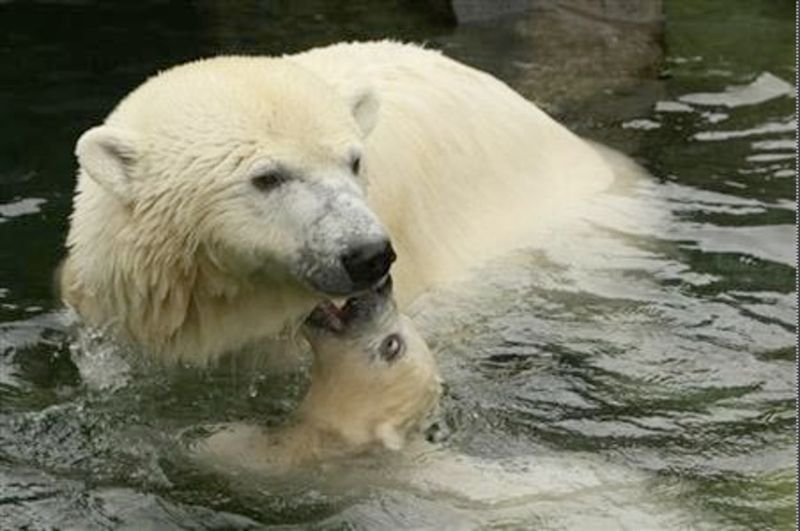
While mostly scavengers, Greenland sharks occasionally transform into fearsome predators capable of taking down the Arctic’s top predator – polar bears! Researchers have found polar bear remains in their stomachs, suggesting these slow swimmers somehow manage to catch these powerful land mammals.
The most likely explanation is that the sharks catch bears swimming between ice floes or scavenge drowned bears. Their powerful jaws can easily tear through tough hide and bone.
Their diverse diet includes fish, seals, whales, reindeer, moose, and even horses that have fallen through ice – making them the ocean’s ultimate opportunistic feeders.
6. Deep-Sea Time Travelers
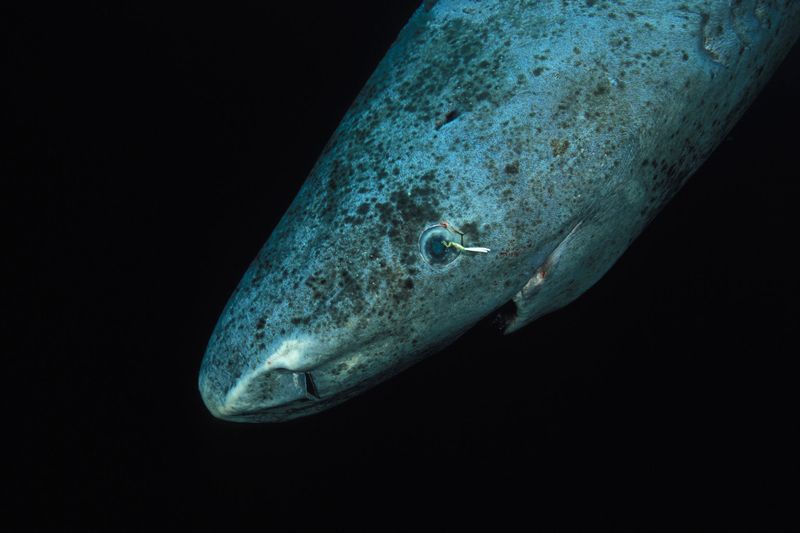
Greenland sharks inhabit extreme depths, commonly swimming at 7,200 feet below the surface where pressure would crush most creatures. Scientists have recorded them at depths exceeding 9,000 feet – deeper than Mount Everest is tall!
Their bodies contain special adaptations to handle these crushing pressures, including soft, cartilaginous skeletons and specialized tissue composition. They regularly travel between different ocean depths, moving from the crushing abyss to relatively shallow waters.
This vertical migration likely helps them find food and may play a role in their breeding patterns, which remain largely mysterious to scientists even today.
7. Frozen Blood Survival Trick
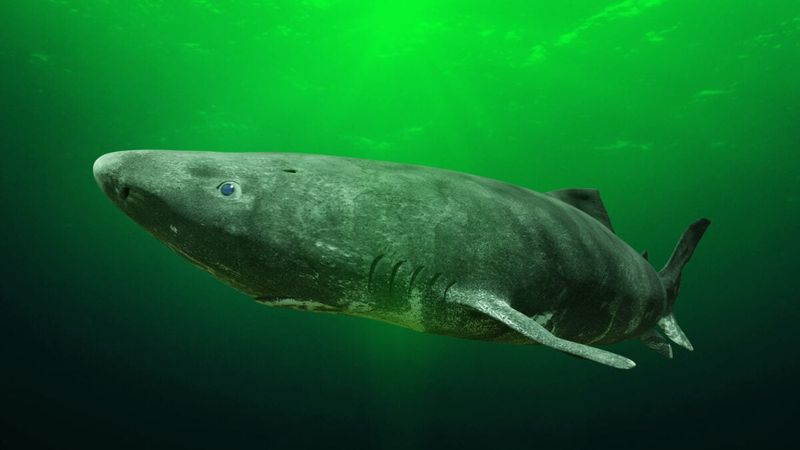
Ever wonder how Greenland sharks survive in water temperatures that would freeze most animals solid? Their blood contains a natural antifreeze! Their tissues are loaded with trimethylamine oxide (TMAO) – the same compound that makes their meat toxic to humans.
This chemical works like antifreeze in a car, preventing their cells from forming ice crystals even in waters as cold as 28°F (-2°C). Without this adaptation, their blood would literally freeze.
This remarkable ability allows them to thrive in Arctic and subarctic waters where few other large predators can survive, giving them access to a food-rich environment with minimal competition.
8. Mystery Mating Rituals
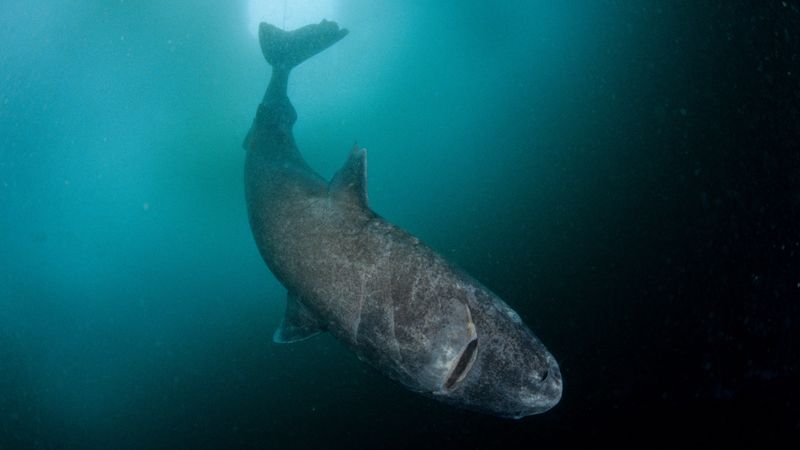
Nobody has ever witnessed Greenland sharks mating or giving birth – one of the greatest remaining mysteries about these creatures. Scientists believe females may carry up to 10 pups at once, but pregnant females are rarely found.
Their breeding grounds remain unknown, though researchers suspect deep-water areas in the Arctic may serve as nurseries. Baby Greenland sharks start life at about 15-18 inches long, already equipped with their species’ characteristic features.
The sharks reach sexual maturity around 150 years of age – imagine waiting a century and a half before your first date! This extremely delayed reproduction contributes to their vulnerability to population threats.
9. Ancient Teeth Tell Tales
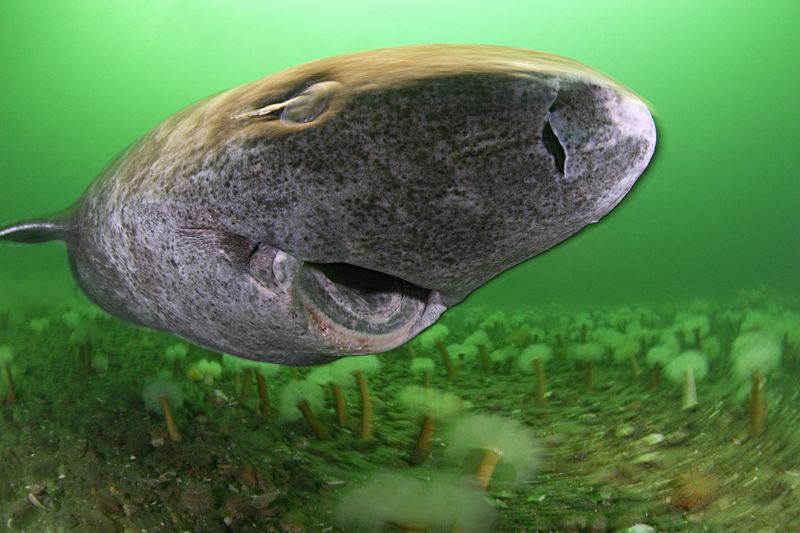
Unlike other sharks with razor-sharp teeth, Greenland sharks sport small, uniquely shaped teeth that look almost comical for such a large predator. Their upper teeth are thin and pointed, designed for holding prey, while their lower teeth are broad and curved, perfect for cutting out circular chunks of flesh.
When feeding, they latch onto prey with their upper teeth, then roll their bodies to spin out plugs of meat – like using a cookie cutter! This technique allows them to feed on animals much larger than themselves.
Examining their stomach contents provides scientists with valuable information about deep-sea ecosystems that would otherwise remain hidden from human observation.
10. Accidental Fishing Victims
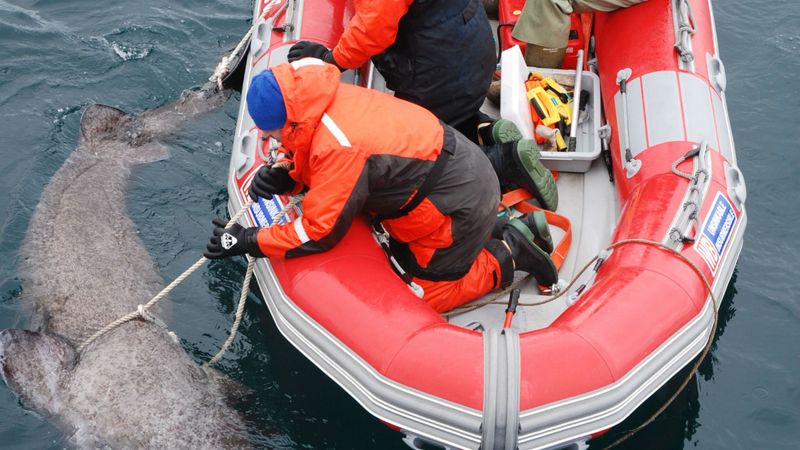
Despite their fearsome reputation, Greenland sharks face serious threats from human activities. Commercial fishing operations accidentally catch thousands as bycatch each year when their lines and nets extend into deep waters.
Their extremely slow reproduction rate makes population recovery nearly impossible once numbers decline. In the past, they were heavily hunted for their liver oil, which contains valuable squalene used in cosmetics and machinery.
Today, conservation efforts are growing as scientists recognize their ecological importance and vulnerability. Several countries now have regulations protecting these ancient ocean dwellers, though enforcement in remote Arctic waters remains challenging.
11. Sleeping Seal Sneak Attacks
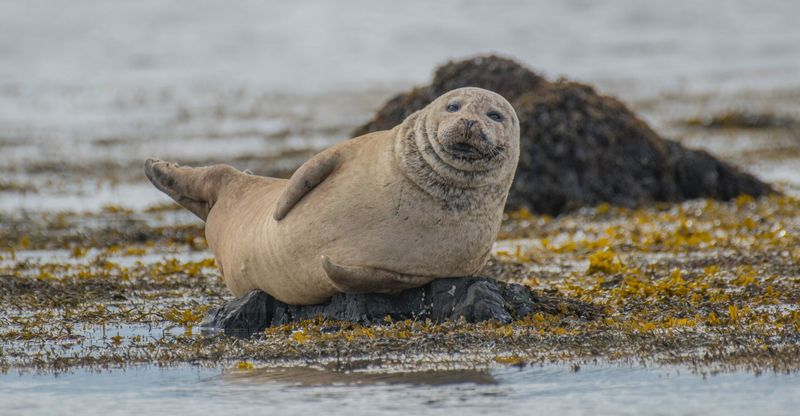
How does a shark so slow catch quick, agile seals? By attacking them while they’re sleeping! Seals in Arctic waters often take naps underwater, entering a state called “sleep swimming” where they drift while resting parts of their brain.
Greenland sharks take advantage of this vulnerability, slowly approaching the dozing seals without triggering their wake response. Their dark coloration helps them blend with the deep water, making them nearly invisible as they approach from below.
By the time a seal detects the shark, it’s often too late to escape. This clever hunting strategy compensates for their lack of speed – proving sometimes slow and steady does win the race!
12. Climate Change Survivors?

Greenland sharks have survived multiple ice ages and warming periods throughout their evolutionary history. Their incredible adaptability might make them unexpected winners as climate change transforms Arctic ecosystems.
As warming waters force cold-water fish species northward, Greenland sharks might benefit from new food sources entering their territory. However, they also face new threats as commercial fishing, shipping, and oil exploration push into previously inaccessible Arctic regions.
Scientists are racing to understand these mysterious creatures before their environment changes too drastically. Their ancient lineage contains valuable information about ocean adaptation that could help predict how marine life will respond to our warming planet.

